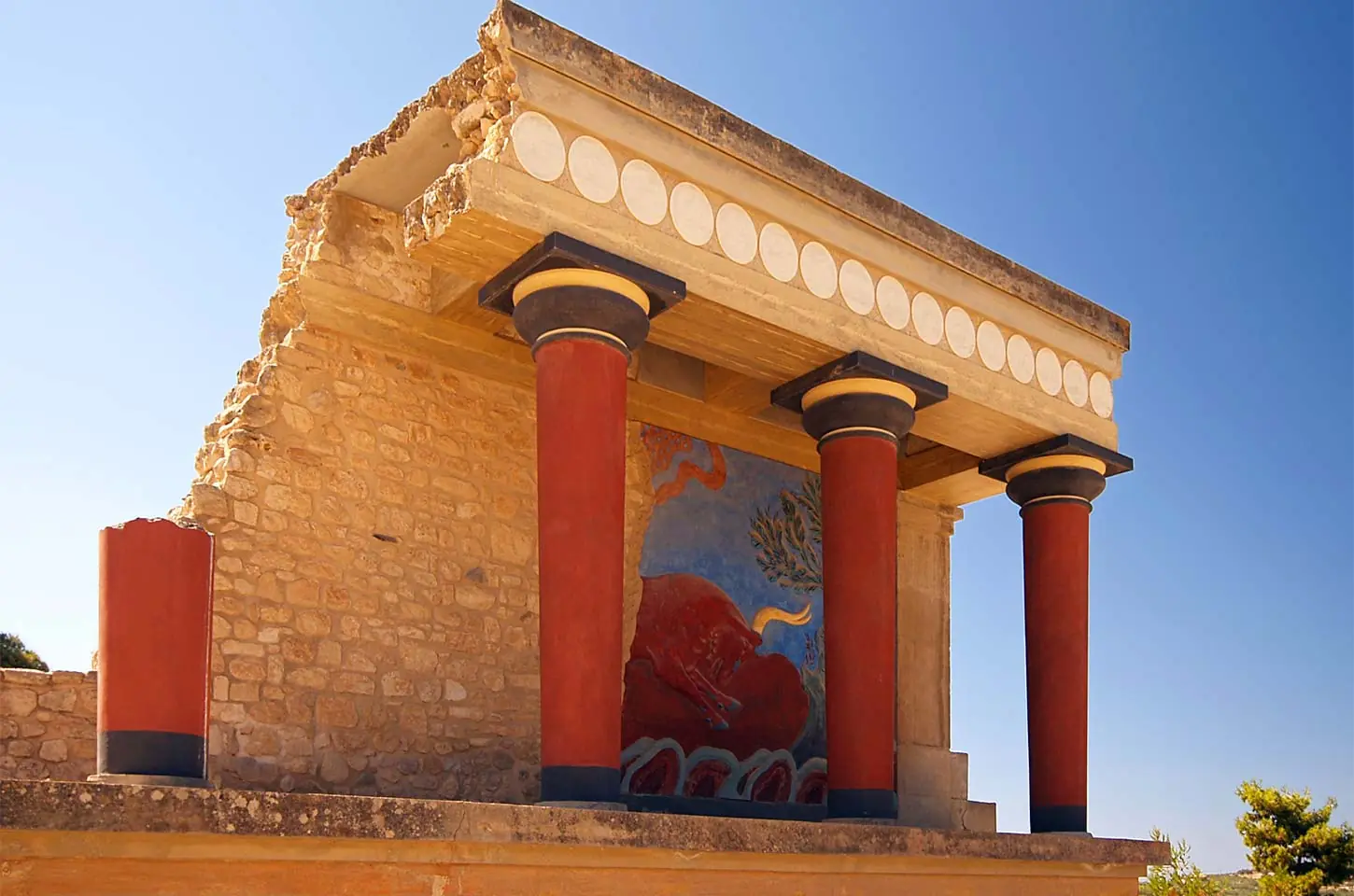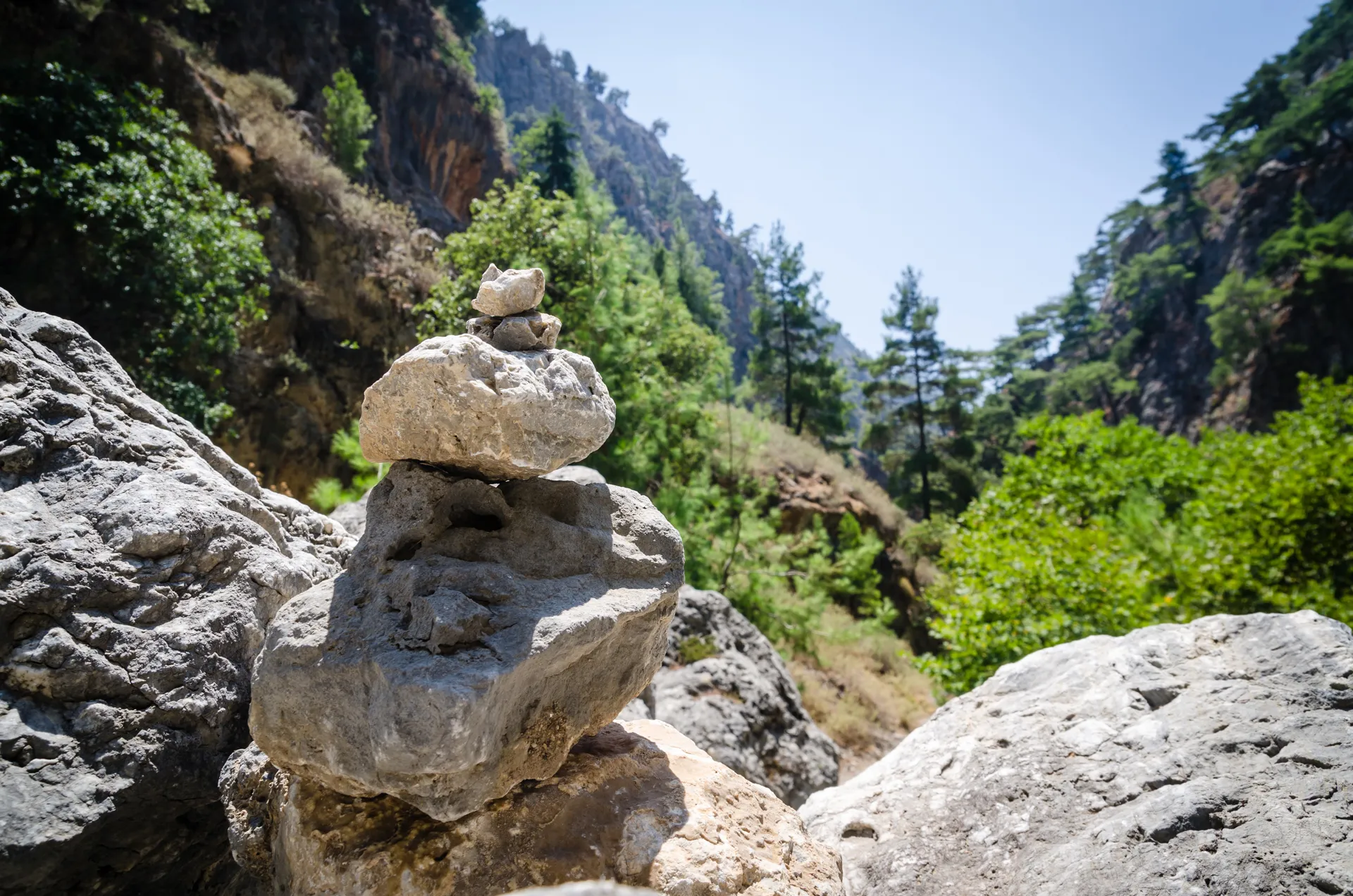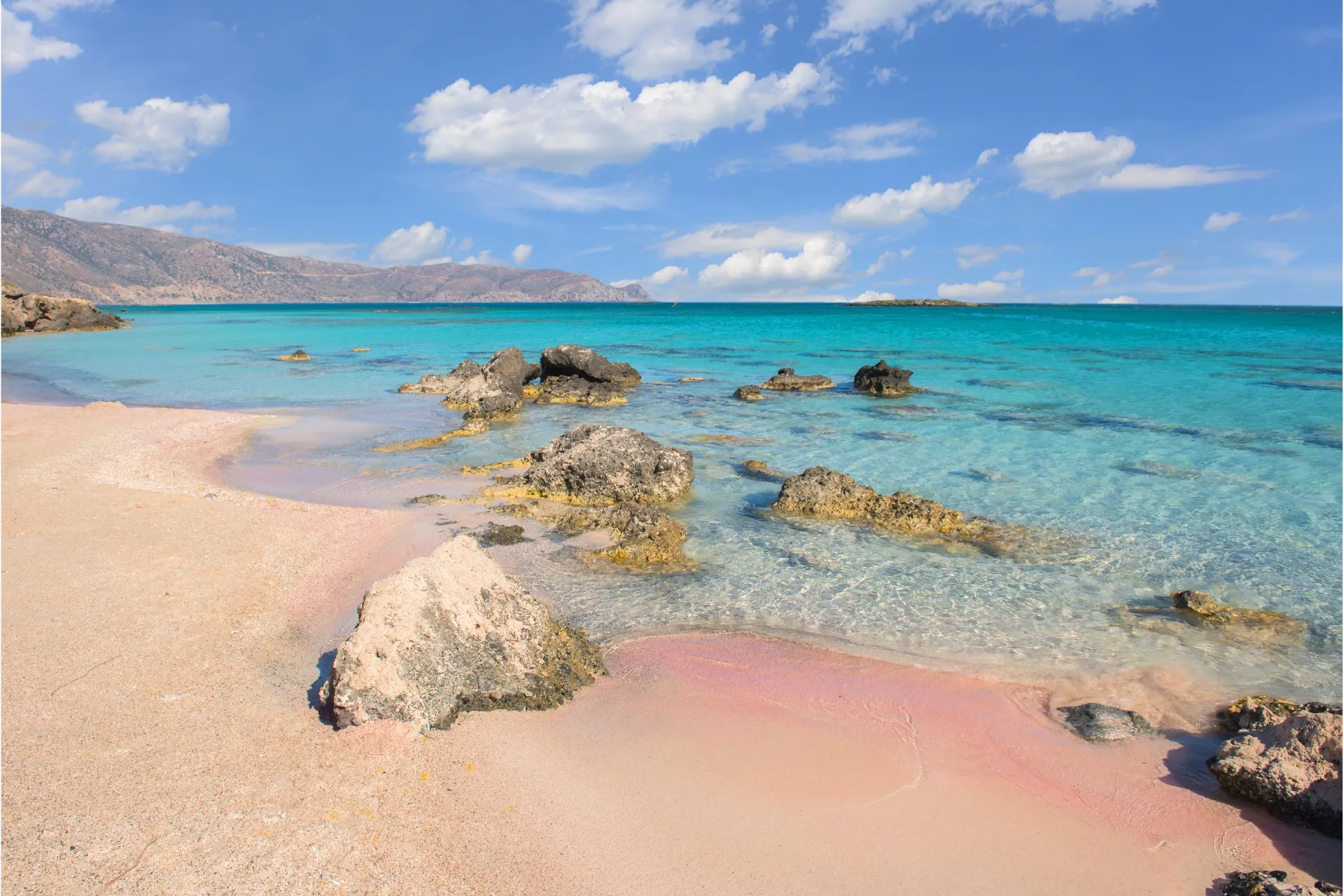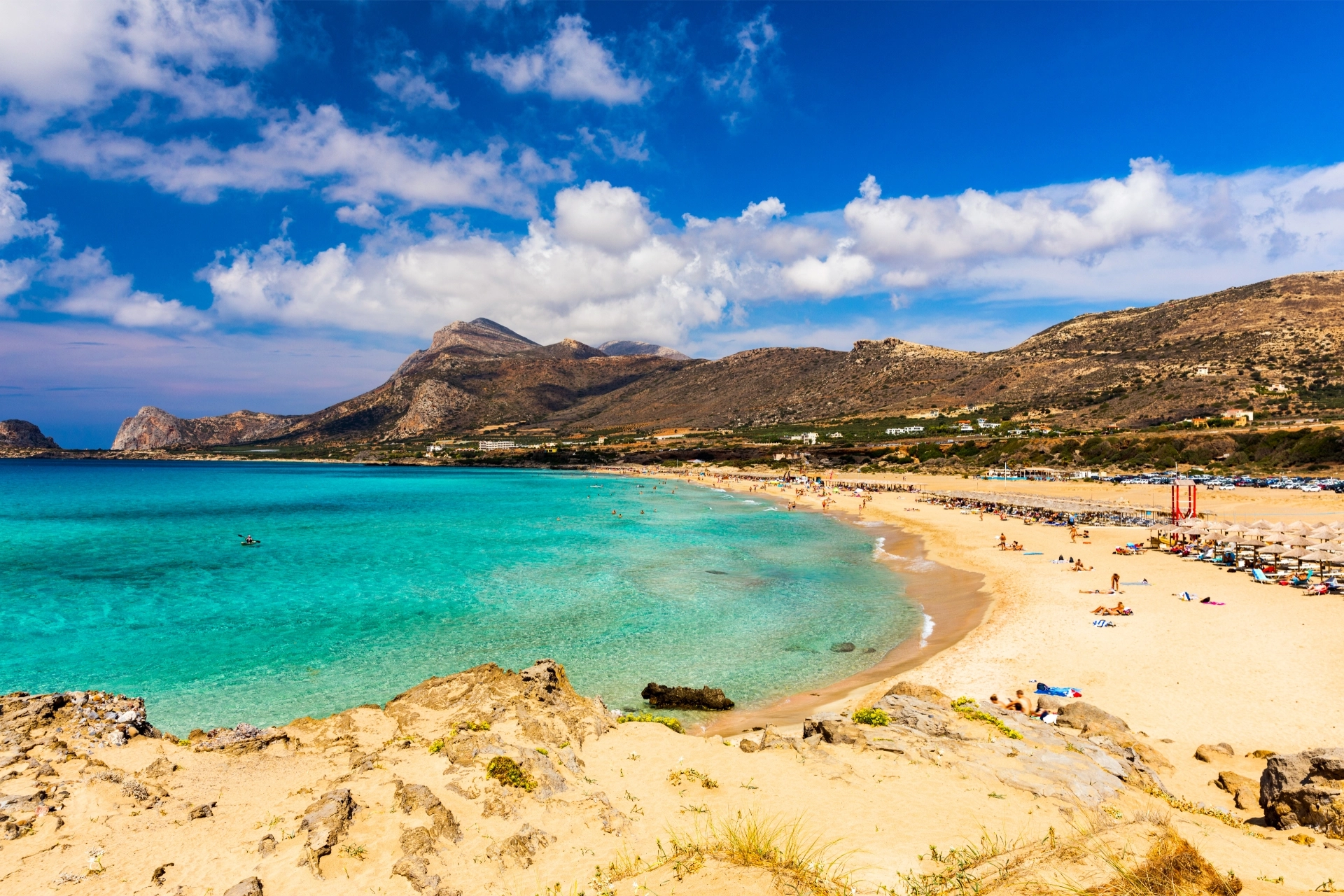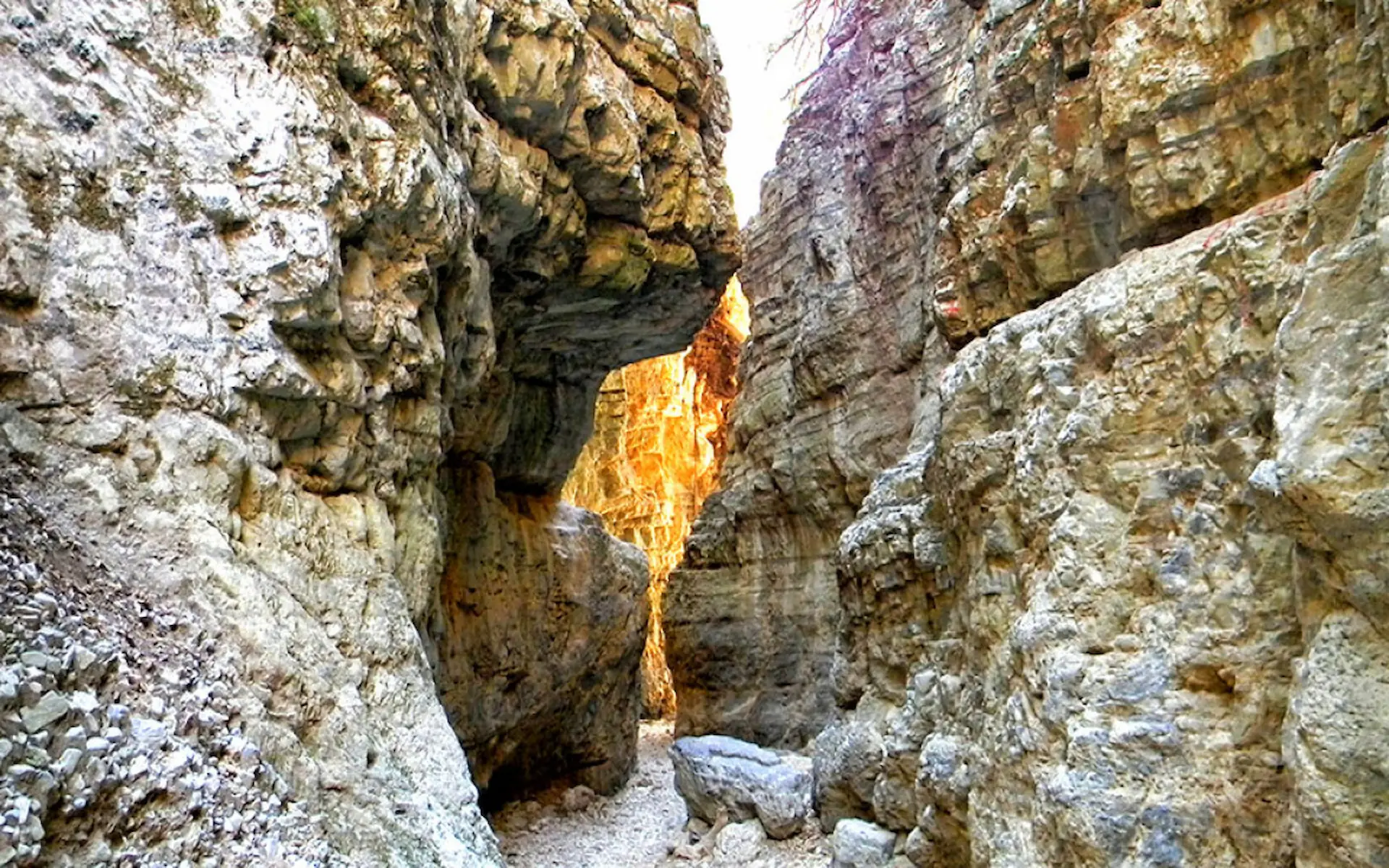Knossos Palace
Knossos is thought to be one of the oldest centers of civilization in Europe and was once home to the most powerful ruler of the Minoan civilization, King Minos. It is believed that this city dates back to as early as the Neolithic Period (7th–4th Millennium BC) and that the palace of Knossos has played a major role in the changing leadership throughout time, including the Mycenaeans and the Roman era.
The palace of Knossos is believed to have been built, destroyed, and rebuilt at least twice within its lifetime. The first palace is estimated to have been built between the 19th and 17th centuries BC. The second version of the palace (16th–14th century BC) is believed to have been constructed in much the same way as the first, with the addition of labyrinth-style corridors and storage rooms. This is where the legend of the Minotaur comes from, surrounding Knossos Palace. Around the 17th century BC, it is believed that the entire city of Knossos was extensively developed, and it has been estimated that the population was around 80,000 inhabitants.
In 1450 BC, after the partial destruction of Knossos, the Mycenaeans settled within the city but did not rebuild the palace. In 67 BC, the city of Knossos was conquered by the Romans, and Knossos Palace was named the “Mansion of Dionysus”. The magnificent mosaics you see today belong to this period. Shortly after the Byzantine times, the port of Heraklion gained more importance for shipping and trade, while the palace and the city of Knossos were slowly forgotten and were rediscovered in 1900 by a British scholar, Arthur Evans. Since the 1900s, much of the site of Knossos has been excavated, and it is this that can be seen today.
Discover this incredible site by exploring it for yourself or choosing to walk around with a tour guide, many of which are available for a fee at the main gate. Should you choose to have a tour guide as you walk this incredible site, it is sure to enhance your knowledge and understanding of this magnificent city. To walk all of the wonders of this site, it will take you around 2 hours and is sure to submerge you in the abundant history of this undeniable UNESCO World Heritage Site.
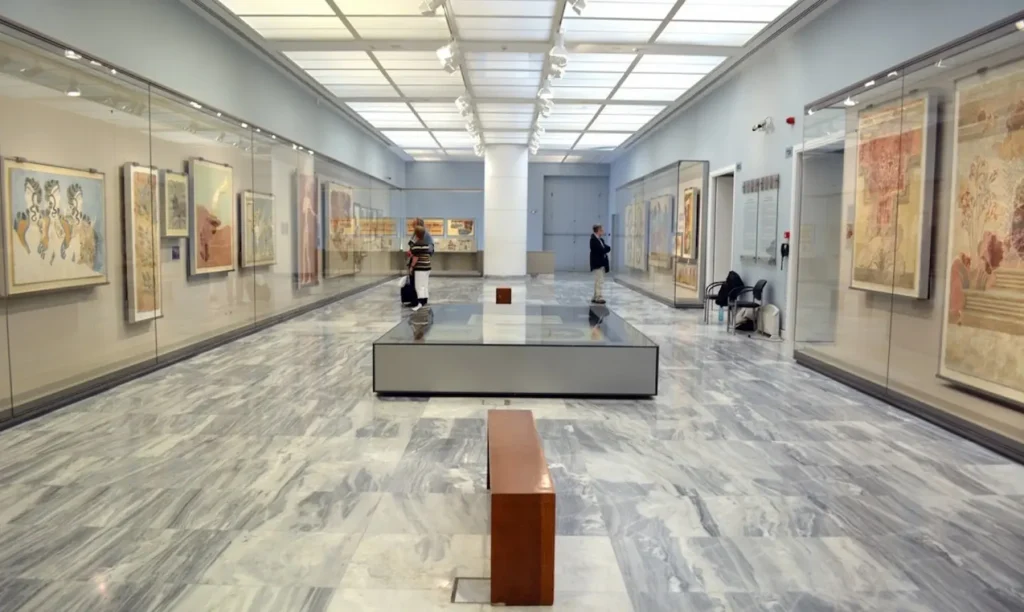
Archaeological Museum
The Archaeological Museum of Heraklion is one of the oldest and is considered one of the most important museums in Greece. It is also considered to be one of the most famous museums in all of Europe. It houses many precious artifacts from all periods of Cretan history and prehistory, covering over 5,500 years, starting from the Neolithic period to Roman times.
This multi-story building is known to house the most notable and complete collection of artifacts of the Minoan civilization in Crete. In 1883, the first archaeological collection in the city was established with a small collection backed by private donations. After the excavations by Arthur Evans began in 1900, the artifacts from Knossos and the surrounding area were entrusted to the First Keepers of Antiquities, which thus enriched the collection the museum has today.
The museum prides itself not only on its vast collection of Minoan art but also on telling the story of the Minoan civilization here in Crete. It houses artifacts from many sites across Crete, including Knossos, Phaestos, Zakros, and Malia. Within the museum today, there are many artifacts that tell the story of this once great civilization. Jewelery, statues, pottery, and everyday items can be found in every part of this museum, bringing to life this long-forgotten way of life.
The Archaeological Museum of Heraklion is most famous for its impressive collection of Minoan artifacts. The Snake-Goddess; The Prince of Lilies and Bull-Leaping Frescos; The Gold Bee Pendant; The Agia Triada Sarcophagus; Phaistos Discs; and Linear B (ancient Cretan language) tablets All of these impressive artifacts can be seen within the Museum of Heraklion, among many other private collections.

